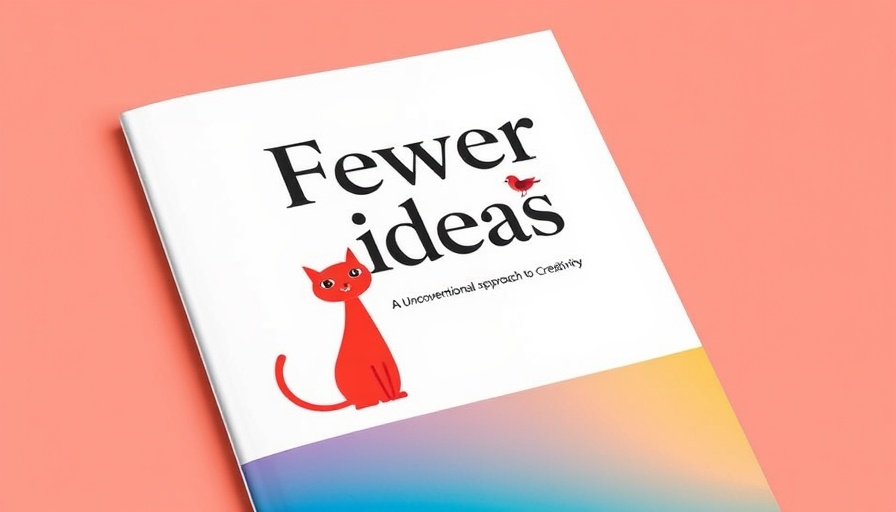
Embracing Fewer Ideas: A Paradigm Shift in Creativity
Remember that last brainstorming session you had? Arguably, many of us have been there: a whiteboard cluttered with endless ideas, enthusiastic chatter, yet a sense of disarray afterward. But what if I told you that the path to innovation could be simpler than generating a long list of possibilities? In a refreshing twist, Eric Olive’s article pushes the envelope on traditional brainstorming, proposing that fewer ideas might actually fuel greater creativity, especially for those in the design field.
The Problem with Excessive Ideas
The conventional mantra that “more is better” has led teams to believe that flooding the room with ideas can enhance the creative process. Yet, cognitive research tells a different story. As articulated by psychologist Sheena Iyengar, brainstorming often overwhelms the brain which struggles to juggle an overabundance of concepts. The reality? Creativity thrives when we pare down our options to just a few salient ideas, allowing for deeper exploration and manipulation.
Evidence from Research
Research conducted by Anne-Laure Sellier and Darren W. Dahl brought these theories into the spotlight, demonstrating that restriction can actually be liberating. In their studies, reducing the number of crafting materials participant used led to a significant boost in creativity. This joy of simplicity encouraged participants to engage more meaningfully with their materials, stimulating their imaginative capabilities.
Lessons from the Statue of Liberty
To underline this principle of 'less is more', let’s take a moment to reflect on the origins of one of the most recognizable landmarks: the Statue of Liberty. Designed by Frédéric Bartholdi, its inception was not born out of a chaotic brainstorming session, but rather a focused approach that drew inspiration from a few powerful cultural symbols. Bartholdi studied Egyptian sculptures and classical representations of liberty, allowing him to craft a figure with both depth and narrative.
A Personal Anecdote: My Creative Process
Early in my career as a UX designer, I often found myself overwhelming clients with multiple options. Yet over time, I realized that after presenting three well-conceived designs, my clients were able to engage more deeply in discussions, refining their preferences and leading to richer final products. This evolution in my process reflected the idea that focusing on fewer, more robust concepts yielded clearer results.
How to Apply This Approach
So how can you implement this less-is-more philosophy in your projects? Start by setting defined challenges. Instead of asking for all ideas upfront, allow time for critical thinking about a select few. Ask team members to elaborate on one or two concepts they resonate with the most. This focused approach not only streamlines the process but also enhances commitment to those ideas.
Future Trends in Creative Strategy
As businesses continue to adapt to rapid technological change, we can expect a shift in how creativity and design workflows are structured. With AI-driven tools emerging, inspiration can be tailored to narrow parameters, optimizing both the brainstorming and refining processes. This will ultimately lead to more impactful designs grounded in thoughtful decision-making.
Conclusion: Less is More
Ultimately, adopting a strategy that favors fewer, well-developed ideas over a torrent of half-formed concepts can lead to richer design outcomes. As UX designers and WordPress users, it's time to challenge the status quo and embrace unconventional approaches that enhance creativity. By fostering environments where quality trumps quantity, we're set to design experiences that resonate more deeply with our audiences. So, the next time you find yourself in a brainstorming flurry, remember: sometimes, less truly is more.
Call to Action
Are you ready to rethink your creative process? Try applying this less-is-more strategy in your next project and watch as clarity and innovation flourish!
 Add Row
Add Row  Add
Add 




 Add Row
Add Row  Add
Add 

Write A Comment